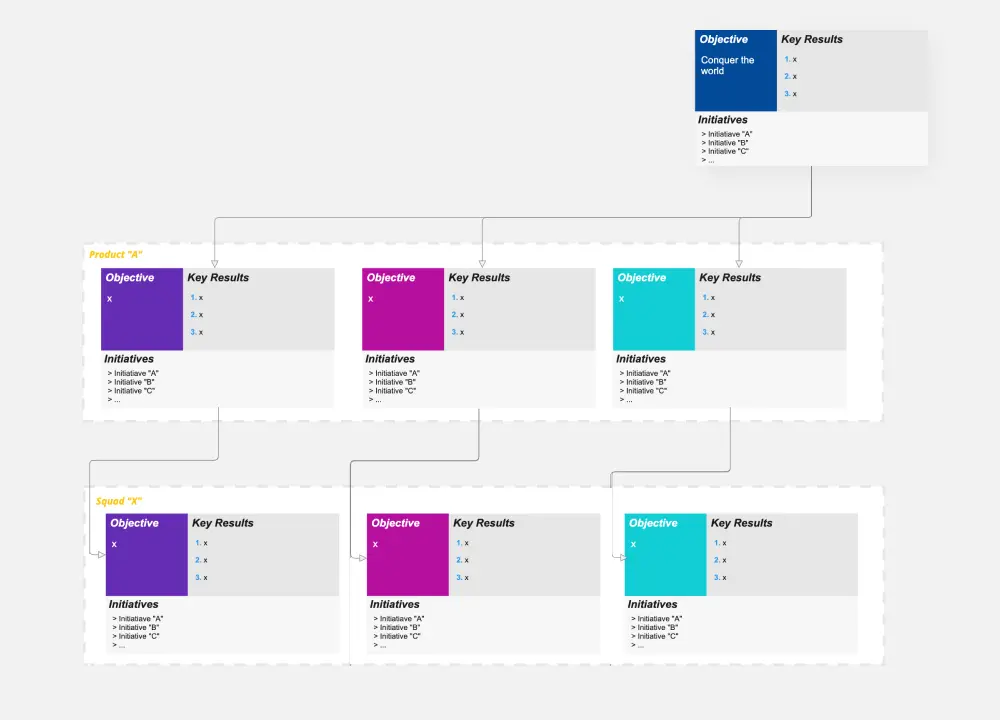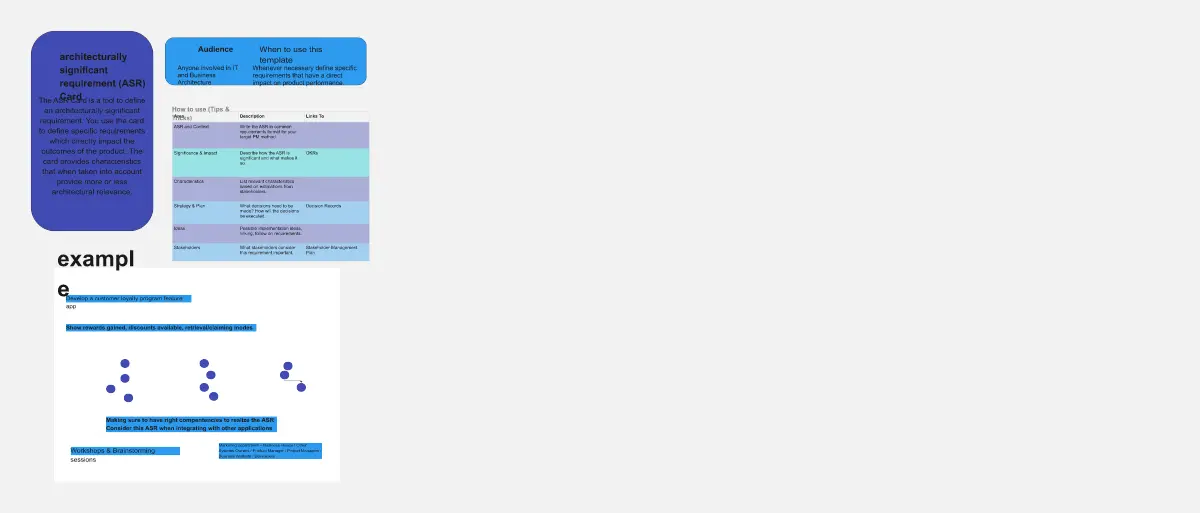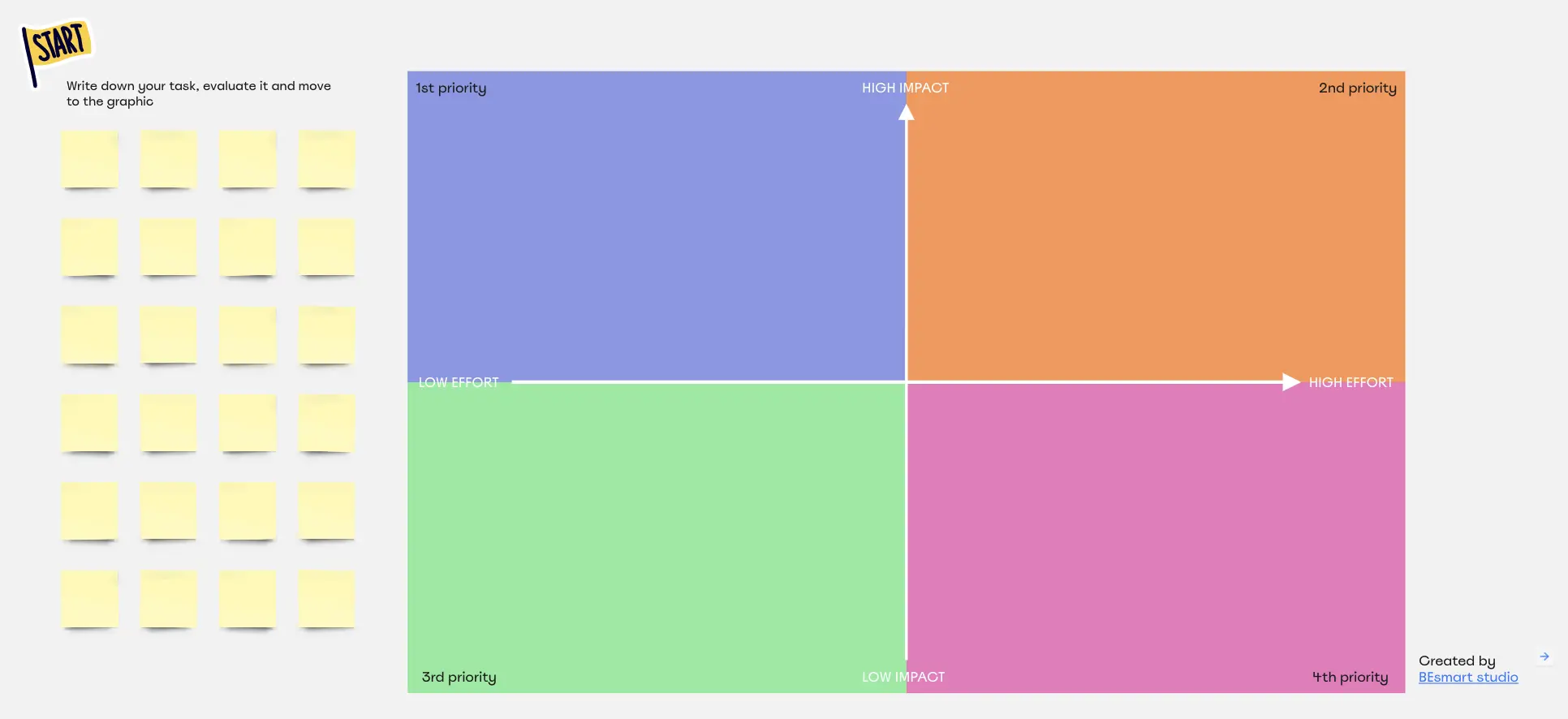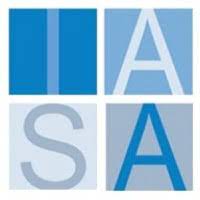IASA - Strategic Roadmap Canvas
Canvas Overview: The strategic roadmap canvas is a tool to bring together the architects view on multiple streams of work. This can be likened to the portfolio or program level in traditional project management but serves a different function for architects. The goal of this canvas is to bring together the strategic nature of the projects/products being delivered and how they depend on each other. By using an Architecture Strategic Roadmap, you can bridge the gap between your long-term business vision and the technical foundation required to achieve it. This collaborative approach ensures that your IT architecture remains strategic, aligned, and adaptable in the face of evolving business needs.
An Architecture Strategic Roadmap Canvas serves as a powerful tool for architecture disciplines. Firstly, it’s vital in ensuring alignment between long-term business goals and the necessary technological groundwork. By outlining the evolution and direction of IT architecture within a defined timeframe, the canvas creates a clear connection between strategic objectives and the technical steps needed to achieve them. This fosters a collaborative environment where everyone involved, from architects and IT teams to company stakeholders, understand the role technology plays in realizing business success.
Beyond alignment, transparency is another key benefit. The roadmap canvas acts as a shared point of reference. Potential complexities of architectural initiatives are broken down into a digestible format, allowing everyone to understand the milestones, priorities, and potential challenges inherent in the architectural vision. The canvas also becomes an essential tool for decision-making. When choosing technology investments, allocating resources, or prioritizing projects, the roadmap provides the context needed to make informed choices that support the overall plan.
Perhaps most importantly, the Architecture Strategic Roadmap Canvas acts as a framework that embraces adaptability. Technology and business needs are dynamic – a roadmap doesn’t dictate a single rigid path, but instead offers a structure that flexes and evolves. This means architects can make the shifts required to adapt to new technologies or reprioritize initiatives in response to changing market needs, all while maintaining a focus on the ultimate strategic goals.
Strategic Roadmap vs. Product Roadmap vs. Business Cases
While all three documents play a role in technology planning, they serve distinct purposes:
Architecture Strategic Roadmap: Focuses on the long-term vision for the IT architecture and how it aligns with business strategy.
Product Roadmap: Outlines the features and functionality planned for a specific product or service over a medium-term timeframe.
Business Case: Justifies a particular project or investment by demonstrating its business value and return on investment (ROI).
How to Use this Canvas
This tool is used to visualize the high-level strategic direction for an organization’s IT architecture. Here’s a breakdown of the sections of the canvas and how it relates to the importance of using architecture strategic roadmaps in your strategy and execution:
Sections of the Architecture Strategic Roadmap Canvas
Vision/Goals: This section captures the overarching vision and goals for the IT architecture. How will technology support the organization’s strategic objectives?
Initiatives: This section lists the high-level architectural initiatives that will be undertaken to achieve the stated goals.
Status/Value/Complexity/Compliance/Governance: These sections provide brief status updates, assess the business value of each initiative, estimate the level of complexity involved, consider compliance requirements, and indicate governance approaches for each initiative.
Timeframes: Here you visualize the timeline associated with each initiative. This might involve start and end dates or milestones.
About IASA Global: IASA Global is a non-profit association for ALL Technology Architects which was established in 2002. The association is committed to improving the quality of the BT architecture industry by developing and delivering standards, education programs and developing accreditation programs and services that optimize the development of the architecture profession. The IASA network and membership consists of approximately 70,000 people in over 50 countries.
IASA Global has created the world's first and only Business Technology Architecture Body of Knowledge, (BTABoK), which is a free public archive of Business Technology architecture best practices, skills, and knowledge developed from the experience of individual and corporate members of IASA.
IASA has added templates for over 30 of the most frequently used BTABoK structured canvases into the Miroverse to help accelerate how Technology Architects collaborate on the architecture of the future. Give one a try today, and learn more about IASA at https://iasaglobal.org/.
Categories
Similar templates





